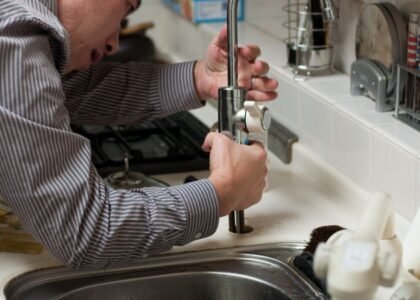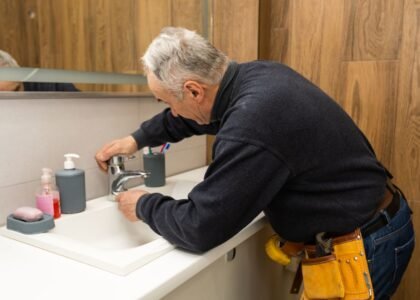Introduction
When your faucet starts dripping or your sink backs up, it’s tempting to ignore it—“it’s just a drip, right?” But small issues often snowball into bigger headaches. In this post, we’ll walk you through five of the most common problems in faucet & sink repair, explain what’s happening, and give practical tips to address them (or at least know when it’s time to call for help).
This post links into our deeper guides on repair strategy (Blog 2) and preventive maintenance (Blog 3). If you decide you’d rather leave it to a pro, use our Faucet & Sink Repair service page or reach out via contact us.
1. Persistent Dripping or Leaking Faucet
What’s happening
- A worn-out washer or O-ring often causes drips at the spout.
- Mineral buildup inside the faucet seat or cartridge can prevent a tight seal.
- Loose components or threads let water escape.
DIY steps to try
- Turn off the water at the shutoff valves under the sink (or main).
- Remove the faucet handle (often a screw under a cap).
- Inspect and replace washers, O-rings, cartridges, or seals.
- Use vinegar or a descaling solution to clean mineral deposits.
- Reassemble carefully, making sure all parts are seated snugly.
⚠️ If you open the faucet and find internal cracks, damaged threads, or seats that can’t seat properly, that’s often beyond a quick DIY fix.
2. Low Water Pressure from Faucet
Common causes
- Clogged aerators or screens
- Partially closed supply valves
- Sediment or debris in cartridge
- Supply line kink or blockage
Solutions to try
- Unscrew the aerator and flush it; soak in vinegar if clogged.
- Check under-sink valves and ensure they’re fully open.
- Remove and inspect the cartridge for debris.
- Check supply tubing for bends, blockages, or mineral scaling.
3. Faucet Handle Feels Stiff or Hard to Turn
Why this happens
- Internal seals may have corroded or worn.
- Scale buildup inside can impede movement.
- Lack of lubrication in moving parts.
What you can do
- Remove the handle and inspect the cartridge or valve stem.
- Clean internal parts with mild vinegar or cleaning solution.
- Lightly lubricate O-rings with plumber’s silicone grease.
- Replace parts that show heavy wear.
4. Sink Drain Is Slow or Gurgling
Though this is more of a sink issue, it’s closely tied to faucet & sink repair.
Causes
- Clogs (hair, grease, soap scum)
- Venting problems
- Partial blockage in trap or drain line
Fixes
- Remove and clean the P‑trap.
- Use a plunger or hand snake (avoid harsh chemicals).
- Check vent stacks or other vents if multiple drains act up.
- Flush with hot water and baking soda + vinegar occasionally.
5. Water Stains, Rust, or Corrosion Around Faucet
Underlying issues
- Leaks beneath or around the base
- Galvanic reaction between metal types
- Hard water causing mineral encrustation
What to do
- Dry the area and inspect for cracks or gaps.
- Reseat the base with proper gasket or plumber’s tape.
- Clean existing rust with a safe cleaner.
- Address hard water with regular maintenance or filters.
When DIY Isn’t Enough
If your repair involves:
- Cracked faucet components
- Corroded valve seats
- Faulty cartridge system replacement
- Hidden leaks inside cabinets or behind walls
Then it’s time to call a professional. Start with our Faucet & Sink Repair page to see what we do. Or connect with us directly via contact us.



